Every spring, Anza-Borrego Desert State Park bursts into color with wildflowers. These superblooms turn the desert into a wild, almost surreal sea of blooms. Here’s my take on where and when to catch the best wildflower displays in Anza-Borrego during spring.
I’ve wandered the trails and hidden corners, always on the lookout for poppies, primroses, and all sorts of desert surprises. If you crave quiet spots away from the crowds or want to stand right in the middle of a flower-filled field, I’ve got some tips to help you get the most out of your wildflower chase.
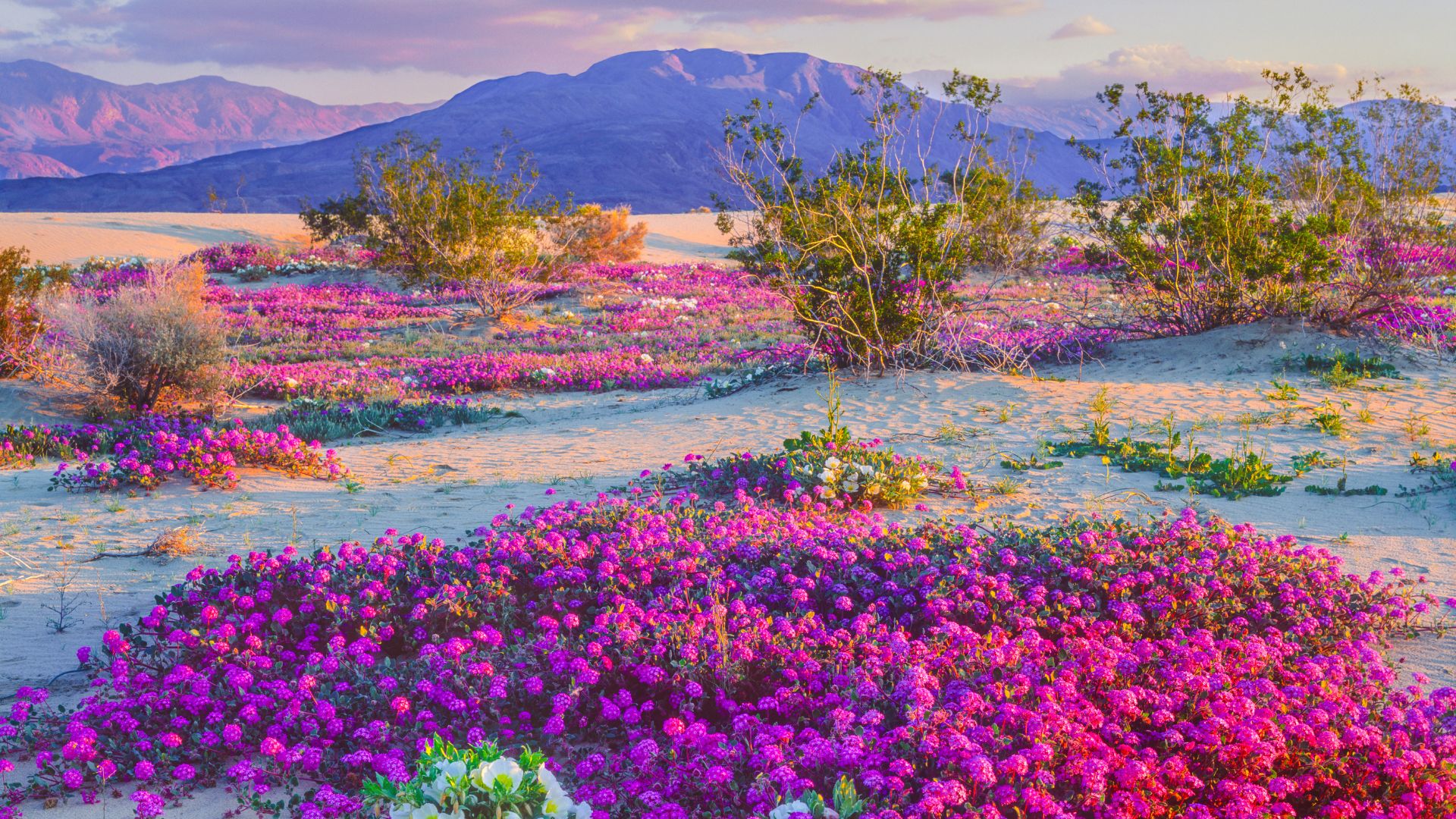
Understanding the Anza-Borrego Superbloom
The Anza-Borrego superbloom doesn’t happen every year. It really depends on just the right mix of rain and weather. When the conditions line up, the desert explodes with color as wildflowers take over the landscape.
What Is a Superbloom?
A superbloom is a rare moment when millions of wildflowers pop up all at once in the desert. It’s not an annual thing—most years, you’ll spot scattered patches, but during a superbloom, the fields get packed with color and energy.
In Anza-Borrego, I’ve seen desert lilies, sand verbena, and dune primrose all blooming together. Bees and butterflies show up in droves, making the whole place feel alive. Even spots that usually look barren transform with color.
People get excited about superblooms because they’re unpredictable and fleeting. The whole show can be over in just a few weeks, so you really have to time it right if you want to catch the magic.
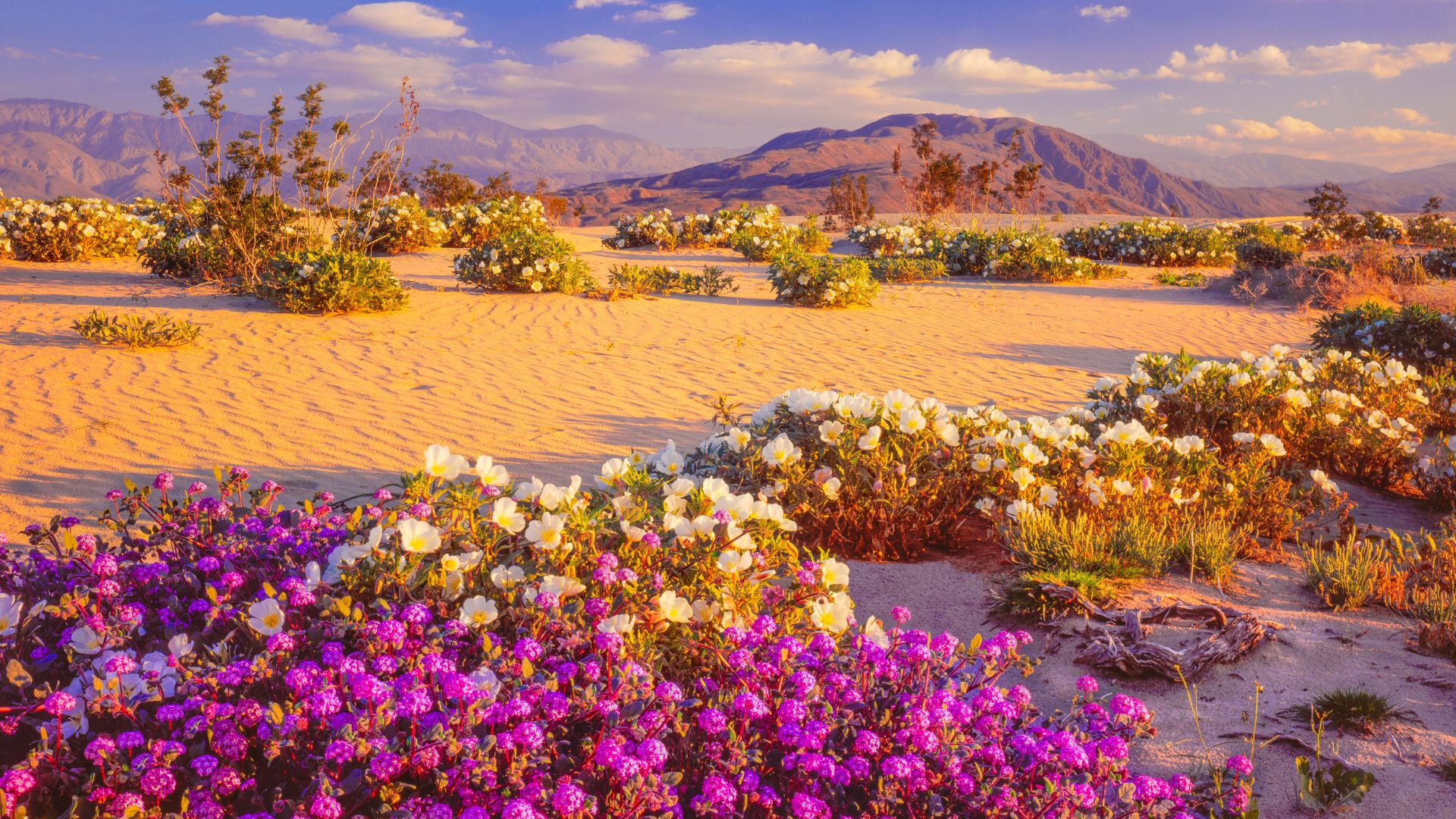
Wildflower Season and Timing
Wildflower season usually kicks off in late February and can stretch into early April. The exact timing shifts every year, so I keep an eye on park updates and local reports to see when the first blooms appear.
Peak bloom might only last a week or two. Some years, there’s no superbloom at all, but honestly, I almost always find at least a few wildflowers. Quick tip: Lower elevations bloom first, then the higher ground follows.
A lot of folks aim for peak week, but even after the main show, I stumble across gorgeous patches. Local resources and online maps are a lifesaver for finding out which spots are popping off.
Essential Weather Patterns and Germination
Rain makes or breaks the superbloom. Autumn and winter showers wake up wildflower seeds and get them growing. If the rain comes too late, or it suddenly gets hot, a lot of seeds just won’t sprout.
Cool nights and mild days help the seeds along. Too much heat or wind dries out the soil and stunts the plants. Chilly nights are great for keeping moisture in the ground.
I always check weather reports and rainfall totals before planning a trip. They give me a pretty good idea of how wild the bloom might get. It’s a dance between weather and timing, and sometimes you just have to cross your fingers.

Best Locations for Wildflower Displays in Anza-Borrego
Anza-Borrego has some of Southern California’s most reliable wildflower spots. Timing matters—a lot—with the best blooms usually showing up between late February and early April.
Different areas offer totally different experiences, from big open fields to winding canyons.
Henderson Canyon Road
Henderson Canyon Road is usually my first stop for wildflowers. In good years, the fields along the road explode with sand verbena, desert sunflowers, dune primrose, and lupine.
It’s super popular because you don’t even need to hike—just park and walk a few steps. I always bring my camera, especially for those wide shots at sunrise or sunset. After a solid winter rain, the blooms here can be unreal.
When the bloom peaks, crowds show up fast, so I try to get there early. And please, stick to the paths—trampling the flowers ruins it for everyone.
Borrego Palm Canyon and Trail
The Borrego Palm Canyon Trail is a classic hike for wildflower hunters. Every spring, the lower part of the trail lights up with desert lilies, Arizona lupine, and brown-eyed evening primrose.
Since the trail climbs from the desert floor to higher spots, I usually see a good mix of flowers. It’s about three miles round trip and easy to follow.
Butterflies and hummingbirds are everywhere, drawn in by the blooms. Near the little stream, you’ll spot even more greenery and sometimes rare flowers that don’t grow in the drier spots.
March is usually the sweet spot for blooms here, but early April can still deliver, especially higher up. If you’re hiking, bring water and wear sturdy shoes—parts of the trail get rocky and sandy.
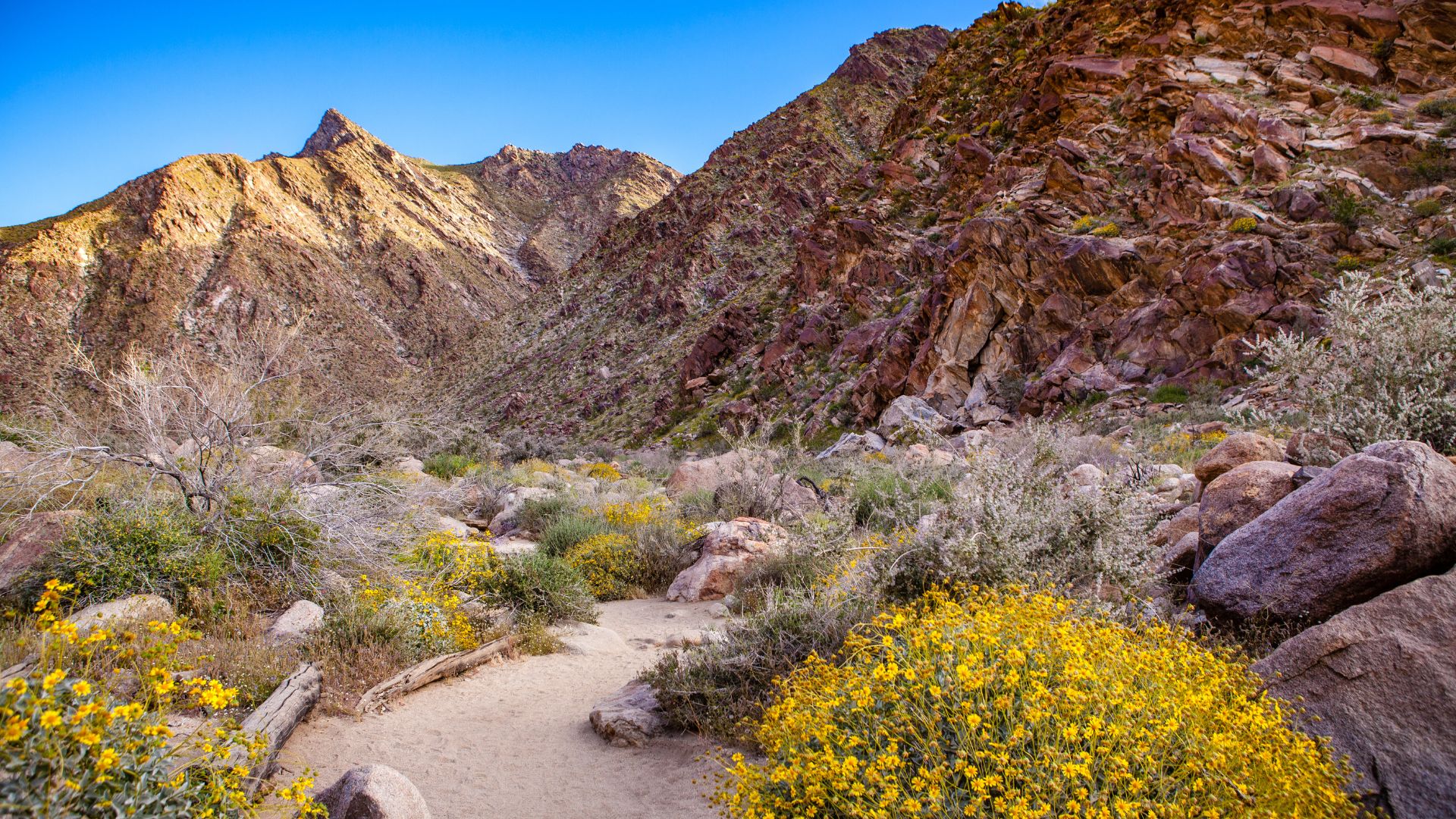
Coyote Canyon and June Wash
Coyote Canyon is my go-to for a quieter flower hunt, especially if I’m up for a bit of off-roading. The main wash in lower Coyote Canyon often bursts with desert sunflowers, chuparosa, and sand verbena.
I like poking around the side washes near June Wash, too—you never know what might be blooming there.
Blooms here tend to start a little later because of the higher elevation and cooler temps. Early mornings are best for photos and catching birds. It’s way less crowded than Henderson Canyon, and sometimes I have the place almost to myself.
If it’s rained recently, the roads can get rough. I always check the latest park conditions and drive slow through sandy patches.
Galleta Meadows and Borrego Badlands
Galleta Meadows is famous for its wide-open views and those wild metal sculptures, but when the conditions are right, wildflowers pop up here too. I love mixing flower photos with the sculptures for something a little different.
Sand verbena and desert sunflower grow near the parking spots. The wind can get crazy in the afternoon, so I usually go early for calmer air and softer light.
The Borrego Badlands offer a whole other vibe. Wildflowers often grow along the washes and in pockets below the eroded hills. The color isn’t as thick as in other spots, but the scenery is dramatic and worth the trip.
I always check flower reports before heading out, since sandy soil and elevation can delay the blooms.
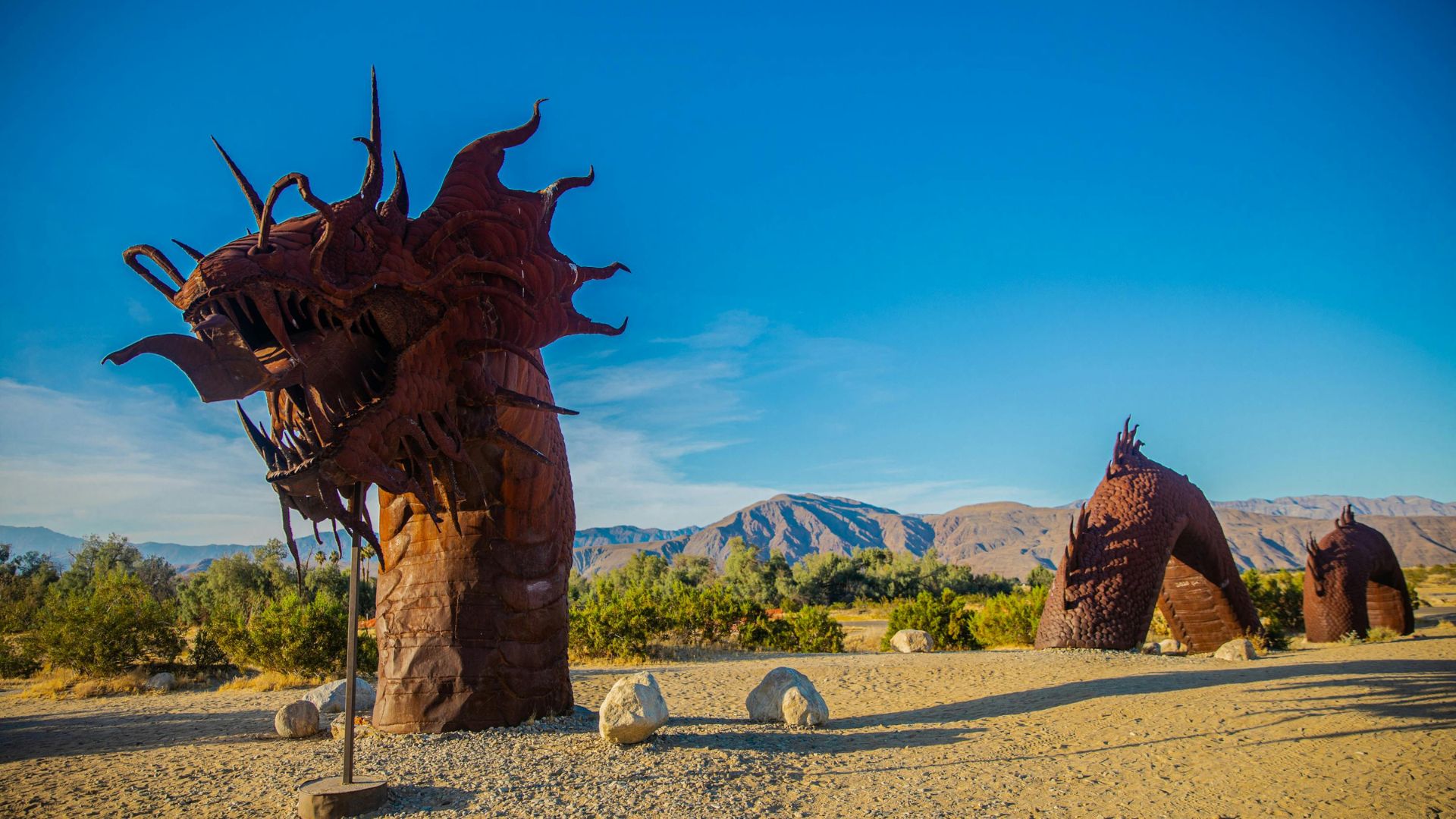
Spectacular Wildflowers and Native Plant Species
Anza-Borrego springs to life with thousands of wildflowers, rare blooms, and tough desert shrubs. The variety is wild—nature lovers and explorers flock here hoping to find both iconic and rare flowers in their element.
Iconic Wildflowers to Spot
Some wildflowers basically define the Anza-Borrego bloom. Sand Verbena (Abronia villosa) covers the ground in purple or magenta. Desert Sunflower (Geraea canescens) stands tall with bright yellow petals. Desert Lily (Hesperocallis undulata) is pure elegance—white, trumpet-shaped, and sometimes covering big patches.
Desert Dandelion and Fiddleneck add even more yellow to the mix. In good years, California Poppies splash orange across the fields, and Red-stem Filaree brings pinkish accents.
These flowers are easy to spot and make the desert look unreal, especially after decent winter rain.
Flowering Shrubs and Desert Blooms
The park is full of tough shrubs that flower in dry conditions. Brittlebush (Encelia farinosa) shows off pale stems and clusters of yellow, daisy-like blooms. Ocotillo (Fouquieria splendens) throws up spiny stems topped with red flowers after rain.
Palo Verde trees sometimes join in with yellow blossoms. These shrubs break up the wildflower displays, adding greenery and height. I’ve watched hummingbirds dart around them, which adds even more life to the scene.
Rare and Unique Desert Species
Some blooms are everywhere, but others are rare and reward those who look closely. Desert Lily is a favorite—delicate and sometimes tricky to find, usually blooming in sandy washes.
You’ll also find species unique to the park’s microclimates, like the Desert Primrose (Oenothera deltoides), which opens at night with white-to-pinkish flowers.
Rare wildflowers depend on the year’s weather and timing. I’ve had years where surprise species popped up that I’d never seen before. With more than 300 documented species, there’s always a thrill in finding something unexpected, each adapted to survive the harsh desert.

Planning Your Wildflower Adventure
Planning a wildflower trip to Anza-Borrego takes a little research, but it’s worth it. Peak bloom draws folks from all over, so having some details in your pocket makes the whole thing smoother and way more fun.
Essential Visitor Information
When I’m getting ready for Anza-Borrego, knowing where it is and when to go is half the battle. The park sits about two hours from San Diego, right by Borrego Springs. Wildflowers usually bloom from mid-March to May, but it really depends on how the winter played out.
Spring temps can swing from the high 60s to the 90s°F. I always dress in layers and bring lots of water—the desert sun doesn’t mess around, even in spring.
Snacks, a hat, sunscreen, and sturdy shoes are musts for wandering through sand or rocks. Parking fills up fast at spots like Henderson Canyon and Coyote Canyon, especially on weekends.
Day-use fees might apply, so I bring cash or a card just in case. And I always check the weather—desert storms and wind can pop up out of nowhere.
Navigating Crowds and Parking
Superbloom season means crowds—no way around it. Early mornings are golden for skipping the rush and snagging a good parking spot.
I always use designated parking areas. Parking on main roads just causes headaches and can block emergency access.
If Henderson Canyon fills up, I look for other trails or less popular areas. Here’s a quick cheat sheet I use:
| Day | Arrival Time | Crowds Likelihood | Parking Availability |
|---|---|---|---|
| Weekday | 7-8 am | Low | High |
| Weekend | 7-8 am | Medium | Moderate |
| Weekend | After 10 am | High | Low |
Staying overnight at places like Borrego Valley Inn or other Borrego Springs hotels helps me beat the morning rush if I’m planning to linger.

Visitor Center Resources and Wildflower Hotline
Before I hit the trails, I swing by the Anza-Borrego Visitor Center in Borrego Springs. They’ve got maps, trail info, and daily bloom updates.
Staff and volunteers know what’s blooming and where, so I always ask for their take. The Visitor Center opens daily during peak season.
I also call the Wildflower Hotline for real-time updates. That way, I don’t waste time in areas that have already faded.
The Visitor Center has maps, restrooms, water refill stations, and cool educational displays. If I’m ever unsure, the rangers are super helpful.
Hiking, Photography, and Outdoor Experiences
Catching the wildflowers in Anza-Borrego is more than just soaking up color. Whether I’m hiking, snapping photos, or just wandering the desert landscape, each trip feels different and always a bit magical.
Best Hiking Trails for Superbloom Views
When I set out on wildflower trips, I always go for trails with those jaw-dropping displays of blooms. The Borrego Palm Canyon Trail really stands out for me. It’s easy to get to, there’s a stream running year-round, and the path bursts with lupine, desert dandelions, and verbena.
Most of this hike feels gentle, and families seem to enjoy it too.
Henderson Canyon Road is another spot I can’t resist. After a good rainy season, the fields just explode with desert sunflowers and purple sand verbena stretching way out toward the horizon.
If you want to miss the crowds or the heat, try heading out at sunrise or late in the afternoon. Trust me, it’s worth the early alarm.
Sometimes, when I’m feeling adventurous and have a high-clearance vehicle, I’ll drive out to Coyote Canyon. The trail mixes a bit of challenge with scenery—orange poppies and white primrose light up the roads and washes during peak bloom.
Just a heads up: some of these trails need a 4×4, so I always check the latest conditions before I go.
Insider Tips for Wildflower Photography
Getting great wildflower photos is all about timing and a little patience. I’ve found early mornings work best—the light feels softer and you’ll run into fewer people.
Late afternoon can be magical too, when the sun throws that golden glow across the petals. Before I head out, I usually check the Anza-Borrego wildflower hotline for updates.
For close-ups, I like using a macro lens. Wide-angle lenses capture those sweeping flower fields against the desert mountains. A small tripod can be a lifesaver when the wind picks up and the flowers start dancing around.
Here are a few tips I’ve picked up:
- Stick to the paths so you don’t crush delicate plants.
- Try the rule of thirds for more interesting shots.
- Look for bold contrasts between flowers and the sandy ground.
- Play with camera angles—sometimes a low shot surprises you.
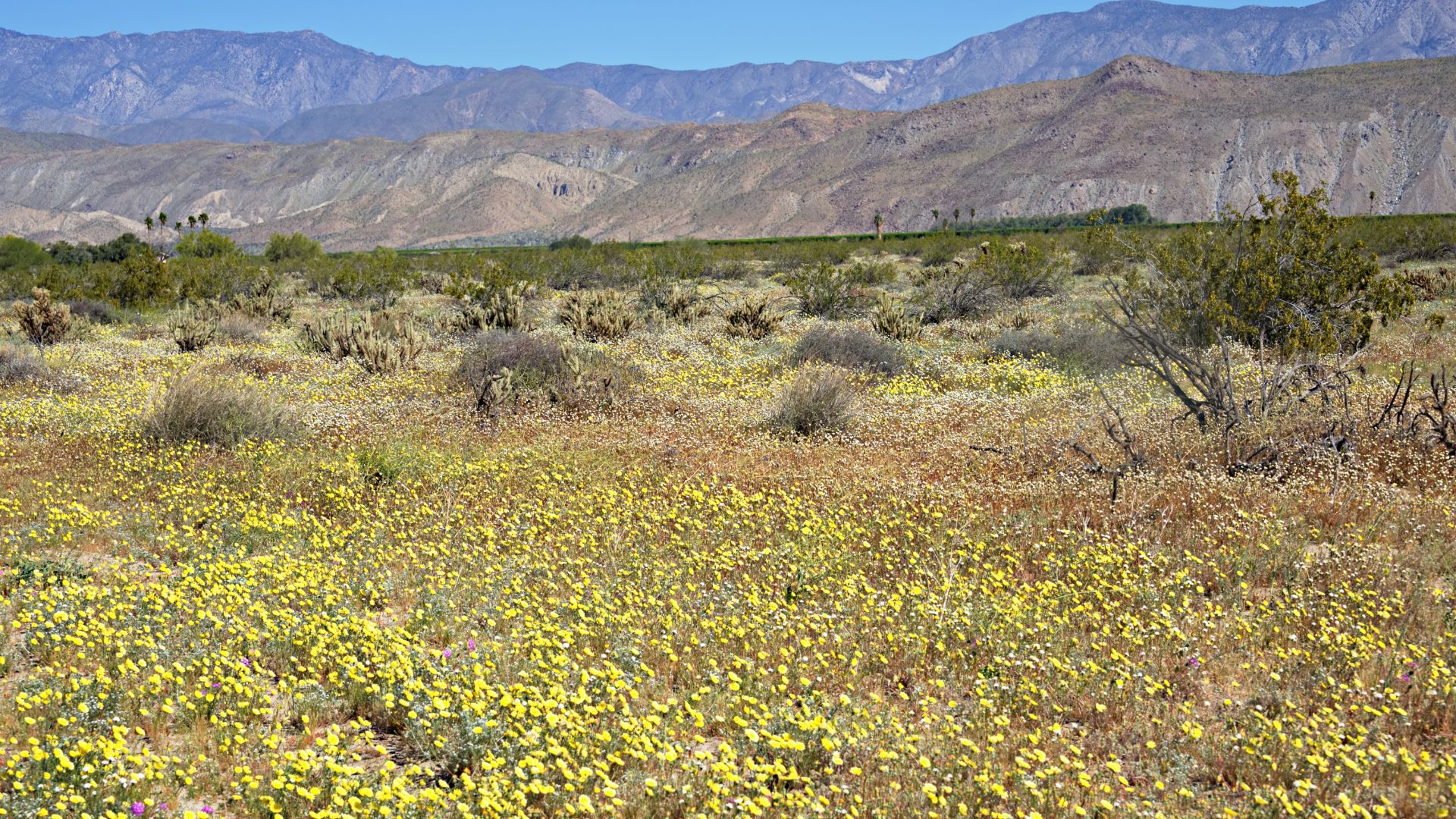
Camping Among the Blooms
Spending the night in Anza-Borrego just feels different. I can catch the superbloom at both sunrise and sunset, which is honestly the best part.
If you’re new to camping or want a few comforts, Borrego Palm Canyon Campground makes things easy. You get quick access to flower trails, plus restrooms and water—super handy for families.
I’ve also set up camp in more remote, dispersed spots around the park. These places don’t have many amenities, but they offer peace, incredible stars, and a real sense of escape.
During peak bloom, I sometimes wake up to flowers right outside my tent. It’s wild.
I always follow Leave No Trace rules. I pack out my trash, avoid picking flowers, and watch my step around fragile plants.
Spring can get busy, so if you want a campground spot, it’s smart to book ahead.
Exploring the Desert Landscape
When I wander past the wildflower patches, I stumble onto all sorts of desert wonders—badlands, canyons, and those tall ocotillo stands waving in the breeze.
Fonts Point is one spot I never skip. The view from up there sweeps across Anza-Borrego’s wild formations and looks down toward Borrego Springs. It’s breathtaking, honestly.
Short walks off the main roads often lead me to mud caves, shady palm oases, or dry washes. These places show just how tough and clever desert plants and animals can be.
I always bring lots of water, cover up from the sun, and keep an eye on the trail markers. The desert isn’t a place to get careless.
Every year, the bloom changes—sometimes it’s a riot of color, sometimes it’s more subtle. Even if the flowers aren’t at their peak, the landforms and shifting colors keep things interesting.
Now and then, I stumble onto blooming cacti or hidden groves that most people miss.

Tips for a Successful Superbloom Visit
After a few trips to Anza-Borrego, I’ve realized that being ready for the heat and dryness makes all the difference. I keep a close watch on weather and wildflower updates, pack the right gear, and stay flexible to catch the best displays.
Staying Safe in the Desert Sun
The sun out here doesn’t mess around, even in spring. I never leave without sunscreen with a high SPF, a wide-brimmed hat, and loose, light clothes to cover up.
UV-protective sunglasses are a must for me.
Water is non-negotiable. For longer hikes, I bring at least a gallon per person, per day. Exploring early or late helps me dodge the worst of the heat.
Desert weather can turn on a dime—sometimes it’s wind, sometimes it’s a sudden spike in temperature. I always check the forecast before I go out.
If I ever feel off—maybe a headache or a dizzy spell—I find shade, rest, and drink water. I try not to hike alone, and I make sure someone knows where I’m headed. Better safe than sorry, right?
Tracking Wildflower Blooms and Updates
Wildflower displays change fast out here. Before each trip, I always check current bloom conditions.
Usually, I’ll hop online and poke around the Anza-Borrego Foundation website or call their wildflower hotline for those weekly updates. Social media groups and chatting with park staff? That’s where I find the freshest news on blooms and what the trails look like.
Honestly, the Borrego Palm Canyon Trail tends to deliver solid wildflower action. Still, I keep a list of backup spots—just in case things shift last minute.
A printed map comes in handy since cell service can drop out without warning. I try to stay flexible and tweak my plans based on what I hear about peak bloom areas.
I also keep tabs on rainfall and temperature patterns. It’s a bit of a guessing game, but that’s half the fun, right? If the timing isn’t quite right, I just soak in the desert scenery and remind myself that nature doesn’t run on my schedule.

